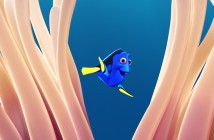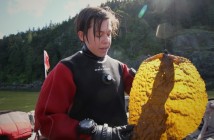Buried at the bottom of a recent anti-aquarium themed online article in the San Francisco Gate covering the recent troubles Petco has been experiencing in Hawaii, a somewhat lengthy video shows college professor Dr. Gail Grabowsky releasing five yellow tangs into the waters off a beach in Waikiki. Prior to the release, Dr. Grabowsky speaks at length about the aquarium trade, making sure to describe how many fish die in captivity, which fish are found only in Hawaii, and alternatives to purchasing wild-caught fish. After the long-winded talk, the professor proceeds to walk out onto one of the jetties and quickly release five “baby” yellow tangs back into the ocean. The area the fish were released in is known as the Waikiki’s Marine Life Conservation District, which is off limits to collectors.
A couple of things on this video. First, we appreciate the more level headed understanding Dr. Grabowsky has of the industry, which is evident by her actually promoting captive breeding instead of screaming for an outright ban on the hobby. She does mention banning the hobby on a few instances, but her seemingly open minded mentions about aquaculture is a far different standpoint that her less sane counterparts have taken. Most anti-aquarium activists just call for a total ban on aquarium keeping. The professor discusses the perks of aquaculture and how many jobs it can create while at the same time alleviating pressures from the environment.
A few other things in the video we saw, or heard rather, were the continual use of unverifiable data. Dr. Gail uses the typical “1 in 10” fish die before they make it to the customer figure, and made reference to data that she and her students collected during class trips. According to her data, Hawaiian endemics that are sought after in the aquarium trade are 10 times more frequent in protected areas like Hanauma Bay than in unprotected waters. She goes on to state that the reason for these differences is strictly due to the aquarium industry. We respectfully disagree with Dr. Grabowsky’s assertions and invite everyone on these points simply for the reason that she could easily come to the wrong conclusion as to why there are discrepancies in fish populations because she, and many others, are letting their emotions guide them to those conclusions. Realistically, fish populations could be depressed in non-restricted areas for any number of reasons, including but not limited to fish collection. Hanauma Bay is a nature preserve, both in the ocean and on land. Because of this, the nearby land is nowhere near as developed as other parts of the island. Naturally, fish will avoid human interactions at all costs and seek out the cleaner waters of protected areas. We assume the waters to be cleaner in places like Hanauma Bay because less development means less nutrient runoff, lower water turbidity, and less pollution.
As for the fish release itself, Dr. Gail’s actions couldn’t be more irresponsible. While she claims the fish were freshly collected from Hawaiian waters and never left the plastic containers in which they were delivered, there’s no way she could have known this unless she was there to see the fish collected, which we know not to be true. Instead, she has to rely solely on the honesty of the fish collector, which we find to be interesting since anti-aquarium activists don’t seem too keen on trusting collectors in the first place. If the fish had been taken to a facility and placed in systems with fish from different parts of the world, the five baby tangs could have come into contact with a wide variety of non-native diseases and parasites. It’s because of all of these unknowns that we, as hobbyists, should never release a fish back into the wild.
Regardless, the bags were opened up and the fish were dumped right into the ocean. They weren’t acclimated to the different conditions that were likely to occur between the water in the bag and that of the ocean, which could have caused undue stress on the already stressed fish. This whole ordeal could have been very counterproductive had the fish died of shock due to drastic differences in pH or salinity.
UPDATE: Thanks to the overwhelming amount of emails sent to Dr. Gail from the aquarium community, they decided to make the original video private. Fortunately, someone made a copy of it before it got pulled.






Pingback: The January MASNA Live Podcast Now Available | AquaNerd()